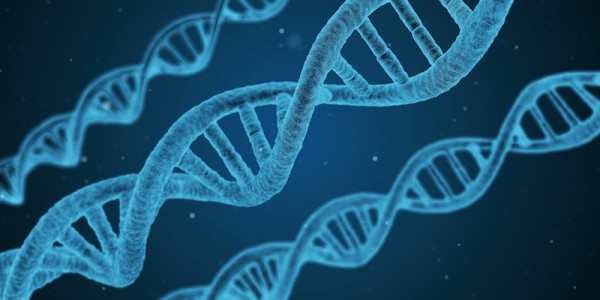15 Interesting Facts About DNA
It’s DNA Day! Celebrated each year on April 25, DNA Day commemorates the completion of the Human Genome Project in April 2003 and the discovery of the double helix structure of DNA in 1953 by James Watson and Francis Crick.
In honor of the anniversary of the completion of the Human Genome Project, here are 15 interesting facts about DNA:
1. The discovery of structure of DNA would not have been possible without the work of Rosalind Franklin. James Watson and Francis Crick built much of their research on the discovery of the DNA double helix on Franklin’s experimental data. Her pioneering use of X-ray diffraction on DNA fibers were key to understanding the structure of DNA.
2. In 1962, Watson, Crick, and Maurice Wilkins received the Nobel Prize in Physiology or Medicine for discovering the structure of DNA. Franklin had died four years earlier and was therefore intelligible to to receive the prize.
3. The human genome contains over 3 billion base-pairs that form the “rungs of the ladder” of the DNA structure. These base pairs are formed by building blocks called nucleotides. There are 4 types: adenine (A), cytosine (C), guanine (G) and thymine (T). These nucleotides pair together in a very specific way: A with T and C with G.
4. If you unravel all DNA molecules and link them together from end to end, the DNA would reach from the Earth to the Sun and back over 600 times.
5. We’re all more alike than you think! All humans share 99.9% of their DNA. It’s that .1% that makes up our differences, including the color of eyes, hair, and skin.
6. Humans share 98% of our DNA with chimpanzees. The number of genetic differences between chimpanzees and humans is ten times smaller than the difference between mice and rats.
7. And 50% of our DNA is shared with a banana.
8. About 8% of human DNA is made up of an ancient virus that once infected us. Fortunately, it’s mostly harmless now.
9. It is possible for a person to have 2 totally different sets of DNA, which is known as chimerism. A chimera can occur when a person absorbs their own twin the womb or if the person undergoes a bone marrow transplant.
10. Each person has approximately 20,000-25,000 genes. The majority of the human genome is made up of noncoding DNA called “junk DNA.” However, recent studies have shown that the noncoding DNA may play a more important role than previously realized.
11. The International Space Station is the home of the Immortality Drive, a large memory device that contains the fully digitized DNA sequences of a select group of humans. Included in this select group are Stephen Hawking, Stephen Colbert, and Lance Armstrong.
12. About 2 grams of DNA can hold all the digitally stored information in the world.
13. DNA has a half-life of 521 years and research suggests that it would take 6.8 million years for every DNA bond to be destroyed. This means we wont be bringing back any dinosaurs!
14. Each cell in the human body contains six to nine feet of DNA. While the total number of cells in the body is tough to determine, it is estimated that the human body is made up of approximately 30 trillion cells.
15. If you type 60 words per minute, eight hours a day, it would take approximately 50 years to type the human genome.
Learn more about your own DNA by doing a DNA test for genealogy!








 Genealogy Discussions
Genealogy Discussions Genealogy Projects
Genealogy Projects Popular Genealogy Profiles
Popular Genealogy Profiles Surnames
Surnames The Geni Blog
The Geni Blog The World Family Tree
The World Family Tree